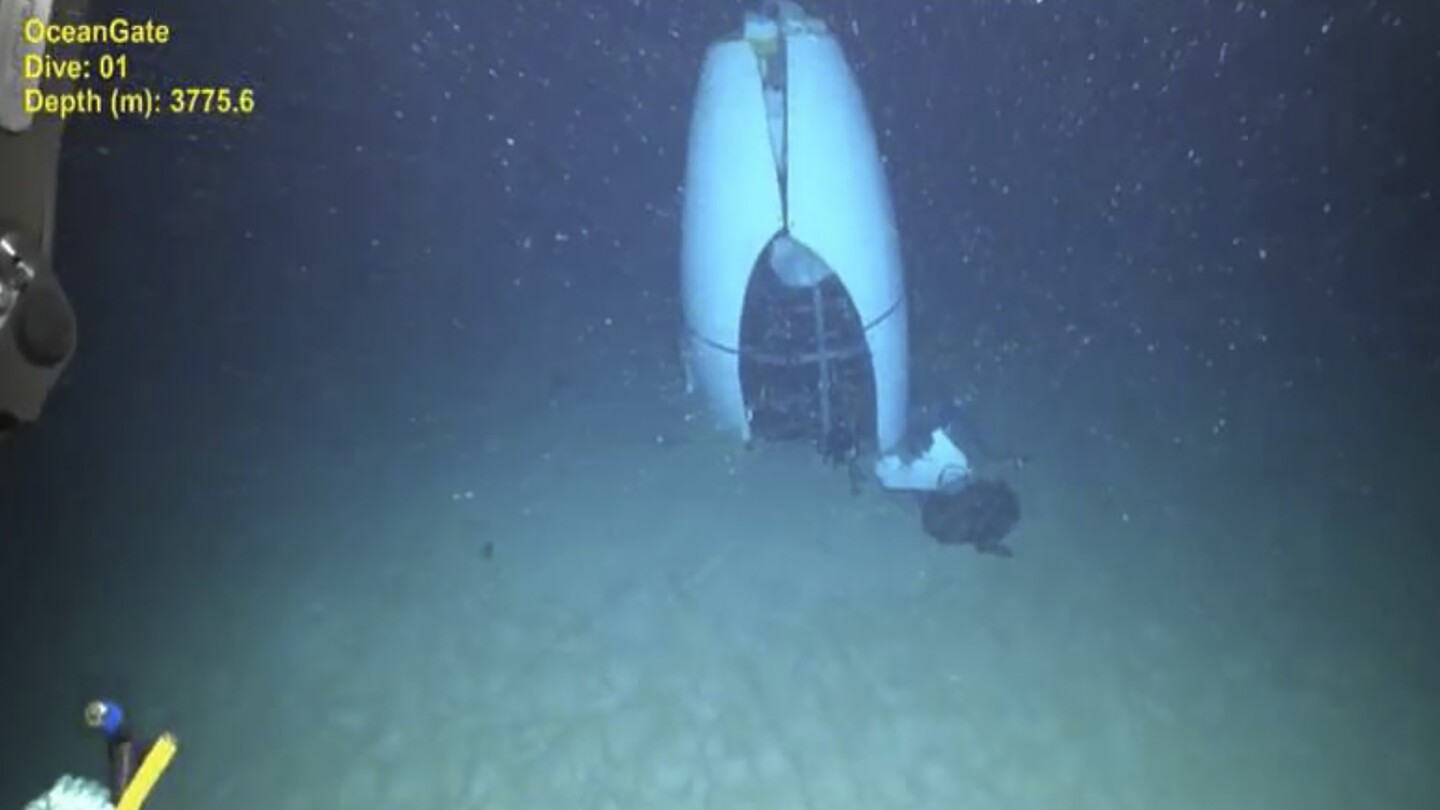Two weeks of testimony suggested the company responsible for an experimental deep-water submersible that imploded, killing five people, either recklessly ignored warning signs in the name of profits or represented the nation’s explorer spirit in taking calculated risks to push humankind’s boundaries.
Those contrasting viewpoints emerged as the Coast Guard panel tasked with determining why the carbon-fiber Titan was lost 12,500 feet (3,810 meters) deep wrapped up testimony Friday with new information that could have changed how rescuers responded and more discussion of the company co-founder’s cavalier attitude.
Capt. Jamie Frederick, commander of the Coast Guard sector based in Boston, appeared surprised to learn that the crew of Titan’s support vessel, in hindsight, felt there was a slight shudder around the time the submersible imploded on its way to the wreckage of the Titanic last year.
Frederick said it was “unconscionable that they wouldn’t share that” and it could have changed the rescue response. “It certainly would’ve changed the equation,” he testified.
Also Friday, an OceanGate employee testified that he resigned after a “tense” conversation in which co-founder Stockton Rush told him the vessel would be flagged in the Bahamas and launched from Canada to avoid U.S. scrutiny — and arrogantly brushed aside U.S. regulatory concerns if it went to a U.S. port.



That’s the problem with the carbon fiber.
Composites like that have a limited lifespan, and they’re very hard to model- there’s a lot of assumptions going into the modeling like “the fibers are all laid perfectly” and “the resin-to-fiber ratio is perfect” and similar. It’s also super hard to check for defects.
Normally, a lot of this is worked around by increasing the amount of CFC to provide a margin if error.
The problem is that you eat up that margin of error as defects expand under the cyclic stress of going down and coming back up.
Worse, they were not inspecting the pressure hull in a way that could detect the nano- and -micro-cracks so they could tell when it was time to take it out of service.
(That kind of inspection is ridiculously expensive. Like. Yeah.)
Well.
Normally this is avoided by using (very expensive) materials like titanium alloys that are “strong” enough to not fatigue after a few trips. (Strong isn’t quite the right word.
Or extremely expensive (to make) acrylic (PMMA,). It’s expensive to make because of some extremely exacting tolerances.
Incidentally, one of the reasons acrylic is used a lot is its transparency makes it super easy to see defects like cracks. (Literally you can see them with no special equipment.)
In any case while CF isn’t exactly cheap, it was less expensive than a titanium hull, or the acrylic bubble hull you see on the Triton subs; but the whole inspection thing got nixed because of greed.
Fun fact; the only reason this hearing is happening is because two of the passengers were rich. Normal people don’t get this dog and pony show.
Other fun fact: they signed liability waivers. Which makes this a very fun dog and pony show.
I think that’s relevant info but essentially useless considering the recommended max-depth for carbon fiber subs.
They never should have gone that deep. Full stop.
I hope the judge/jury think a waiver was not sufficient to protect ocean gate from negligence.
I dunno, it seems pretty safe to me. I’ve ridden the same carbon fiber bicycle for years and it has never imploded.
You, know that you’re supposed to replace the frame if you crash because of similar issues (specifically delaminating being hard to identify without destructive testing )
Just saying.
Though I do believe it’s never imploded….hehe.
Sure, but if it’s so underdimensioned that it can only go one time, then it’s seriously not good enough for passengers. If the fibre sits correctly it should be able to cycle lots of times, not necessarily having a long lifespan. But yeah this was a shitshow and I stand by the idea that they should have tested it, even several times without living beings inside.
Fot me it’s all basic engineering 101 misstakes.
The issue is that carbon fibre is strong, hard, but brittle. When it fails, it fails catastrophically. It also doesn’t show many/any signs of failure, till it fails.
A carbon fibre hull, under those loads, could be good for 5 dives or 100, depending on the vagaries of how it was made. It won’t show the wear, until it fails. That is why most companies won’t trust CF under those sort of loads.
It really is basic engineering.
Like.
Probably not even 101. We’re talking about material selection…. And the properties aren’t exactly unknown and the necessary capabilities aren’t unknown.
The only think that was really unknown is how many dived it had. (CF can be fickle. It’s almost certain there were Minor defects. That’s just something you engineer around, sure, but you never know how close those defects are to becoming not-minor, and it really doesn’t take much. A single micro crack in the wrong place and… well, it probably happened fast enough that they didn’t even know.)